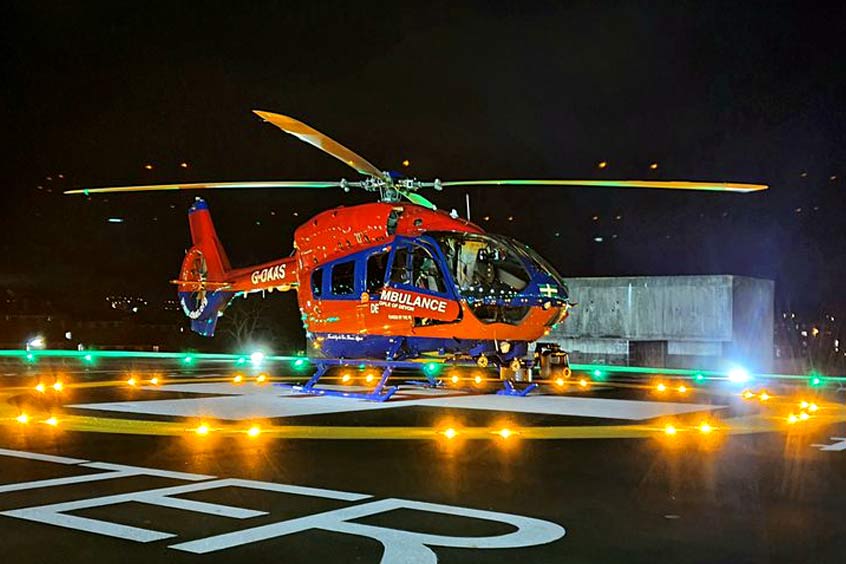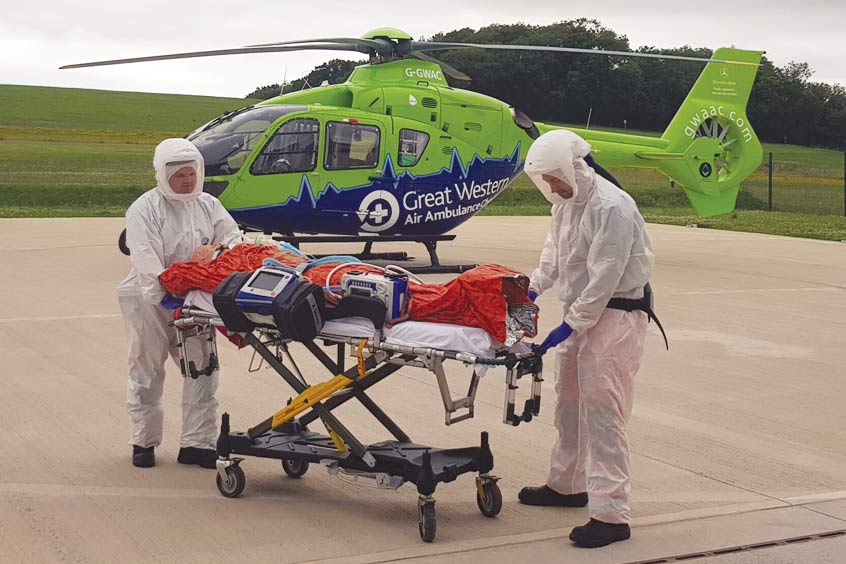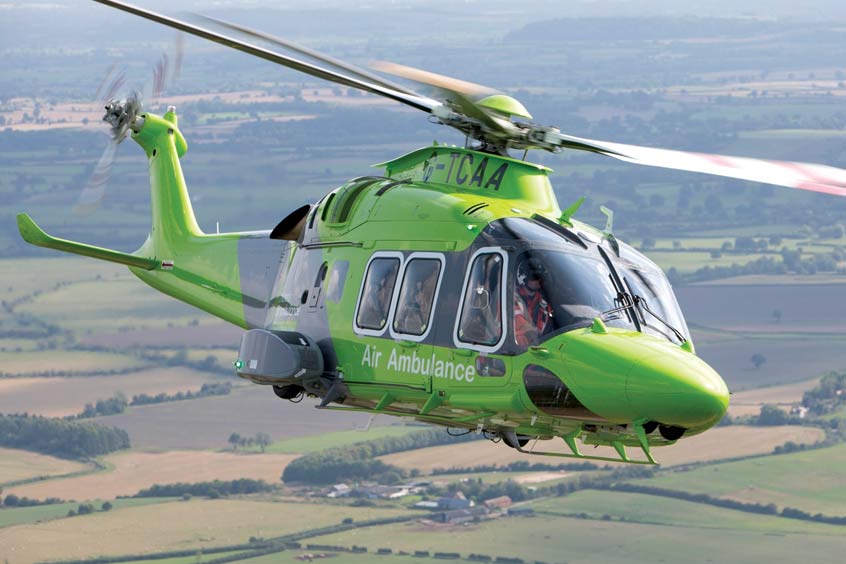Why visit ACE ’25?




Devon Air Ambulance (DAA), the UK charity-funded HEMS service, has revealed its mission statistics for 2020. Throughout the year the charity has been tasked to attend over 1,500 incidents across Devon and was, on many occasions, also called to assist across its borders in neighbouring counties. Of those missions, 590 were to help patients with medical emergencies (those suffering with a medical condition) and 912 were to attend trauma-related incidents (accidents and injuries caused by slips, trips, falls, burns and collisions to name just a few). Crews assisted 607 male and 261 female patients, as well as 68 children who also needed their expert care.
July was DAA's busiest month of the year and Sunday its busiest day of the week. This is thought to be due to many people taking time out for hobbies and pastimes at the weekend, as well as those carrying out home improvement plans that do not always go as smoothly as intended. Two of the most common sporting groups it was tasked to were equestrian related (38) and cyclists (29).
Patient services ops director Nigel Hare says: “Following the initial reduction in call outs to patients during the first lockdown, 2020 has been both busy and challenging for our service. The school summer holiday period is always busy for Devon Air Ambulance, but in 2020 the demand for our service remained very high from April right through to October. Although November brought a brief return to normal levels, the number of patients we have deployed to in December, and so far during January, has been similar to the number of patients we normally respond to in the summer.”
Being tasked to 406 incidents, the two rapid response critical care cars introduced by DAA in February 2020 have made a significant contribution to the service. Kitted out with blue lights and the same medical equipment found on board the helicopters, these vehicles can provide a swift response to patients and can sometimes access heavily built-up areas more easily than the air ambulances, which need an open space to land safely. They also enabled the service to keep responding to medical emergencies when the helicopters were temporarily stood down in March to be made COVID-safe.
Night landing sites have also proved invaluable in the past year as 207 missions took place during the hours of darkness. The charity now has over 160 landing sites situated throughout the county that provide a safe place to land away from unseen obstacles, enabling the pilot to bring a life-saving service into the heart of those communities up until 2.00am. A community landing site is developed and part-funded by the local community and can be located on a green, field, sports pitch or playing field. DAA is always keen to hear from any local communities that are interested in finding out more about them.
The DAA medical team conveyed 184 patients by air in 2020, but also accompanied 271 patients on their journey to hospital in a land ambulance so they could continue to observe, monitor and treat them with the enhanced care they needed until their arrival at hospital.
Meanwhile The Children's Air Ambulance (TCAA) has reached another milestone by transferring its 500th patient.
Formed in 2012 and operated by The Air Ambulance Service, the transfer service provides the only intensive care aircraft in the UK dedicated to transferring critically ill babies and children at high-speed from local hospitals to specialist paediatric and neonatal treatment centres. It receives no government funding and relies on public donations to remain operational. Two AW169 helicopters operate from bases in Oxford and Doncaster with the average cost of each mission coming to GBP3,500.
The recent landmark 500th patient transfer was to fly a patient to a specialist hospital in the west of England alongside the NHS retrieval team Wales and West Acute Transport for Children Service (WATCh). The flight lasted one hour and 17 minutes. By land ambulance this journey would have taken nearly three hours, according to TCAA.
The charity works with 10 NHS paediatric retrieval teams, including WATCh, across the UK, enabling specialist equipment on board to safely transfer their patients from one hospital to another. If a child is too sick to fly, then TCAA can fly a specialist team directly to them; this has been necessary on a further 83 occasions, meaning the critically ill baby or child could still receive the urgent care they desperately needed.
TCAA is continually looking at ways in which it can increase support to the NHS and the clinical teams. It recently achieved another first in the UK by enabling the functionality of ECMO and nitric oxide on board its aircraft and are leading the way in paediatric and neonatal transfer aviation.
In other news, UK HEMS provider Great Western Air Ambulance Charity (GWAAC) has reported that its critical care team was called to around five patients a day on average across 2020, despite the COVID-19 pandemic causing national lockdowns and restrictions throughout much of the year.
The crew were called to 1,726 patients in urgent need across Bristol, Bath and north east Somerset, north Somerset, Gloucestershire, south Gloucestershire and surrounding areas. Fifty-five percent of call-outs were trauma-related, including over 300 road traffic collisions. However, the most common incident was people suffering life-threatening cardiac arrests; they responded to over 500 patients experiencing this medical emergency.
GWAAC's team consists of critical care doctors and specialist paramedics who bring the skills and expertise of a hospital emergency department to critically ill or injured patients where their skills can make the difference between life and death. From giving roadside blood transfusions to performing emergency surgery on scene, the crew are specially trained in pre-hospital emergency care.
CEO Anna Perry says: “Our critical care team has been there throughout the pandemic, right on the frontline, doing whatever is needed to protect and care for the public. We all rely on it to be there for us, but as we go into another difficult year, we ask whether you will be there for it. Our charity relies on donations from people living in this region, so if you can donate yourself, recommend us for an award or a grant or leave us a gift in your will, please do not delay; we need your support this year more than ever.”